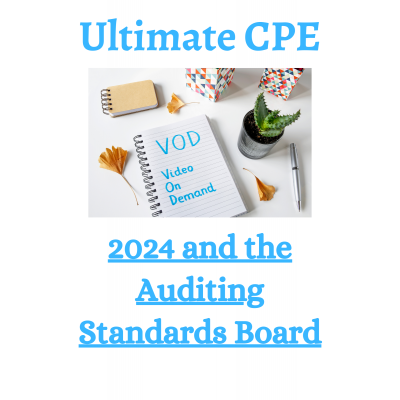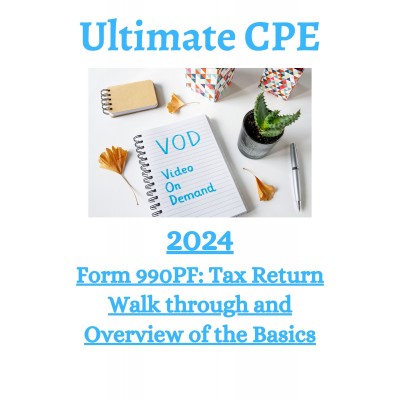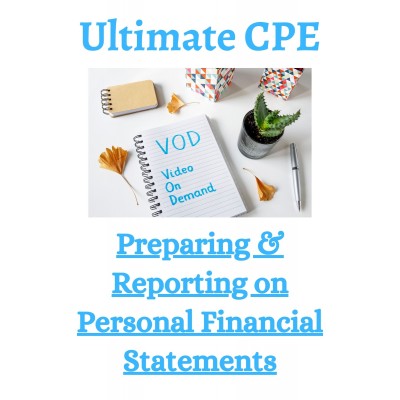UltimateCPE, Inc. is registered with the National Association of State Boards of Accountancy (NASBA) as a sponsor of continuing professional education on the National Registry of CPE Sponsors. State boards of accountancy have final authority on the acceptance of individual courses for CPE credit. Complaints regarding registered sponsors may be submitted to the National Registry of CPE Sponsors through its website: NASBAregistry.org.
Refine Search
- Course Format
Ultimate CPE offers on demand self-study courses covering topics in a broad range of areas, including audit and accounting standards, taxation, retirement and estate planning, ethics and personal development. This full range of training allows you to take the training completely on your own terms, whether at your desk, on the train, or at home. Receive the course materials, complete the exam and review questions online and receive the CPE Certificate immediately. On-Demand Videos and Webinars are offered through Wolters Kluwer and are not eligible for coupons or discounts.
Author: Jim Buttonow
CPE Credit:
2 hours for CPAs
IRS fi..
1099 Reporting Payments for Middlemen, Agents, Liens and Garnishments
Course Number: 95525
Credits: 2
Course Number: 95525
Credits: 2
Author: Steven D. Mercatante
CPE Credit:
2 hours for CPAs
..
1099-MISC Reporting of Rents, Royalties, Med Service Providers, Fringe Benefit
Course Number: 93425
Credits: 2.00
Course Number: 93425
Credits: 2.00
Author: Steven D. Mercatante
CPE Credit:
2 hours for CPAs
..
Author: Steven D. Mercatante
CPE Credit:
2 hours for CPAs
..
Author: Jim Buttonow
CPE Credit:
2 hours for CPAs
..
Author: Pat Patterson
CPE Credit:
2 hours for CPAs
Review ..
Author: Lewis R. Fisher
CPE Credit:
2 hours for CPAs
Join ..
Author: Pat Patterson
CPE Credit:
2 hours for CPAs
Review ..
Author: Pat Patterson
CPE Credit:
2 hours for CPAs
Review ..
Author: Greg White
CPE Credit:
5 hours for CPAs
..
Author: Bradley Burnett
CPE Credit:
8 hours for CPAs
..
Author: Steven D. Mercatante
CPE Credit:
2 hours for CPAs
..
2024 LLCs: Reducing Self-employment Tax and Maximizing the 20% Passthrough Deduction
Course Number: 95424
Credits: 2
Course Number: 95424
Credits: 2
Author: Greg White
CPE Credit:
2 hours for CPAs
..
Author: Pat Patterson
CPE Credit:
2 hours for CPAs
Review ..
Author: Greg White
CPE Credit:
2 hours for CPAs
..
Author: Celia Davis, Lisa McCreedy, Clark Nuber
CPE Credit:
..
Author: Allison McLeod
CPE Credit:
2 hours for CPAs
..
Author: Robert K Minniti
CPE Credit:
2 hours for CPAs
It i..
Showing 1 to 18 of 18 (1 Pages)






